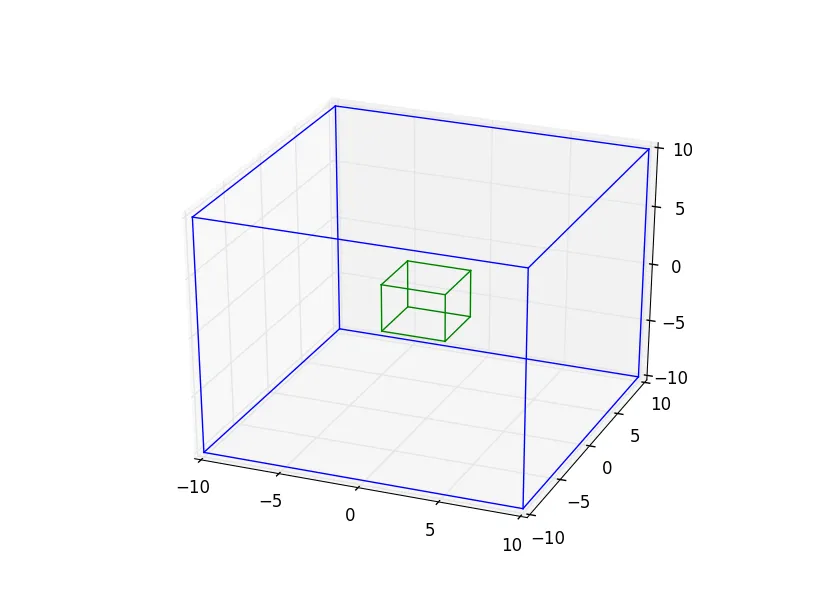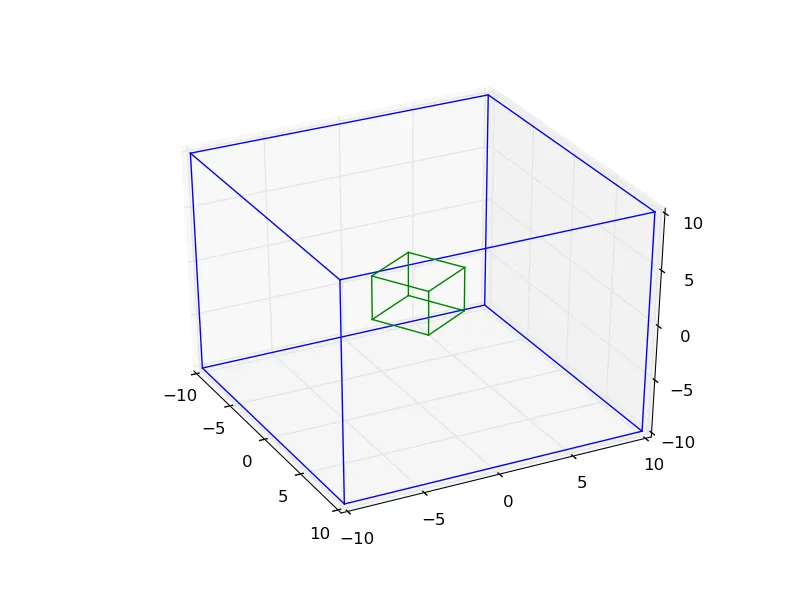我已经完成了两个立方体的3D绘图。但是现在我想让它旋转,那么我该如何旋转内部的立方体?我希望水平旋转90度!以下是代码:

from mpl_toolkits.mplot3d import Axes3D
import matplotlib.pyplot as plt
import numpy as np
from itertools import product, combinations
fig = plt.figure()
ax = fig.gca(projection='3d')
ax.set_aspect("auto")
ax.set_autoscale_on(True)
#dibujar cubo
r = [-10, 10]
for s, e in combinations(np.array(list(product(r,r,r))), 2):
if np.sum(np.abs(s-e)) == r[1]-r[0]:
ax.plot3D(*zip(s,e), color="b")
#dibujar punto
#ax.scatter([0],[0],[0],color="g",s=100)
d = [-2, 2]
for s, e in combinations(np.array(list(product(d,d,d))), 2):
if np.sum(np.abs(s-e)) == d[1]-d[0]:
ax.plot3D(*zip(s,e), color="g")
plt.show()
 请注意,角度由三角函数指定,需要转换为弧度。
请注意,角度由三角函数指定,需要转换为弧度。